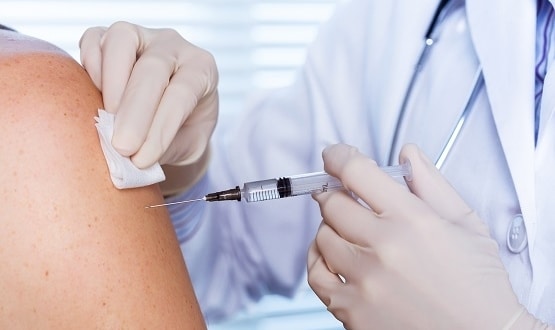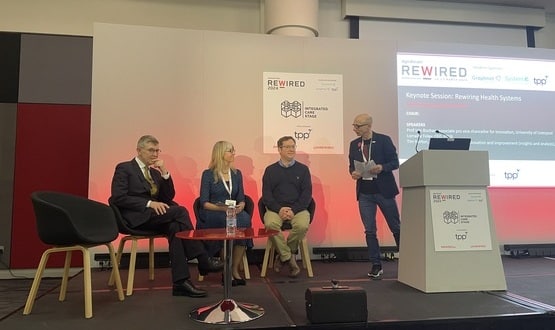Another view: of Covid-19 vaccinations
- 14 December 2020

In his latest column for Digital Health, Dr Neil Paul explores all things Covid-19 vaccinations and how they will be carried out.
There is a Chinese proverb about living in interesting times, at this point I’m not sure if it’s a blessing or a curse.
We started the Covid-19 pandemic with adapting to working from home, doing total triage, video calls and burning through millions of SMS messages, but things have changed. We are now using a hot hub, a central location that GP practices send potential Covid infected patients.
Face-to-face is no longer the standard – at the hot hub, the clinicians use remote consult, which lets them access consultations of patients. It works well, but the templates are a pain. This is because if the hub wants to standardise the recording of information by using a template it needs to be added to all the 29 practices which use the hub. We need to be able to automatically populate multiple systems with a common template or have a super template. Also, there is no easy way of centrally recording what activity is done at the hub as all the data is stored in a separate system.
Extra work
Back at my GP practice, we have been forced to open up our appointment systems. We have to deal with NHS 111 and potentially others adding a patient’s name to an open appointment list. This means our reception team have to constantly check to see if it has been filled. We then have to contact and triage the patient (our thoughts on whether they need to be seen and 111s often vary) and personally I can’t see why this is any better than telling the patient to ring us.
Speaking of extra work – whole new major initiatives keep coming our way. In the last few weeks, we have had a lot pressure on us to set up a pulse oximetry at home system. In trial sites, having patients monitor their oxygen saturation levels daily at home and ask for help when they dipped, has helped improve survival. So quite rightly it was decided to roll this out.
We were initially told to crack on as fast as we could, which is fine. Devices were bought and were ready for us to hand out. We decided to use the hot hub as a base and as that’s where our potential Covid-19 patients would go.
When it come to how to use the devices, we looked at potentially using AccuRx to message the patients daily or possibly using Doctaly, with whom we were having initial talks with. Because the patient might get directed from multiple places, not just GP surgeries, we couldn’t use the cross-organisation booking method, but luckily the hub has its own EMIS web system which we could use.
Preparing for the vaccine(s)
So, we were progressing our home monitoring solution then, just when all hands were on deck working on the pulse oximetry systems, out came the cry of “prepare for the vaccine!” (or vaccines…as the case may be).
Despite it initially being felt it would be mass vaccinations centres, suddenly its primary care’s job. This led to lots of rushing about trying to find one venue per PCN [Primary Care Network], checking the IT, buying them fridges, new carpets, ramps etc.
Getting accurate data on who needs vaccinating is interesting. We used EMIS Enterprise Search and Reports, which allows us to run live anonymised searches across practices. This gave quite significantly different results on the number of patients in each age band and especially who was house bound than the regional business intelligence teams were getting.
Of course, it turns out that regional data appears to be influenced by people who opt out of sharing data – this seems to exclude them completely which seems wrong? Also, I think it highlights that we really need to standardise on some common codes for things and agree them across all providers
The problem with recording
Finally, what’s been a little quiet, at least locally, is the concept we have to swab NHS staff regularly. I’m not sure how we are going to record this and haven’t seen much guidance.
Our clinical systems are built for patients not staff. General practices’ don’t have huge occupational health teams the way that a hospital might, and staff will be being vaccinated perhaps by their employer, perhaps by their own practice, perhaps by a mass centre? I’m currently interested in whether we will be asked to work on this locally, be forced to use a regional or national solution!
Interesting times indeed.




4 Comments
This post only demonstrates to me that there is no National Health Service and that there is little or no proper leadership and direction from the Government in respect to making vaccination the absolute priority to deal with the COVD-19 Emergency. The fragmentation of health service responsibilities into commissioning groups, purchasers and providers is not only baffling to those that are mere patients but in my observation can be a cause of delays, which may well be applicable to getting Vaccinations done
covid not cover, bloody autocorrect.
Really important tales from the frontline, Neil. I hope the centre are reading this. In the northeast we have developed a staff cover vaccination app through our local IT Co-op @NHSHealthcall.
Thanks! useful to know re app. This week its all the trials and tribulations of Pinnacle! I feel another column coming on…
Comments are closed.